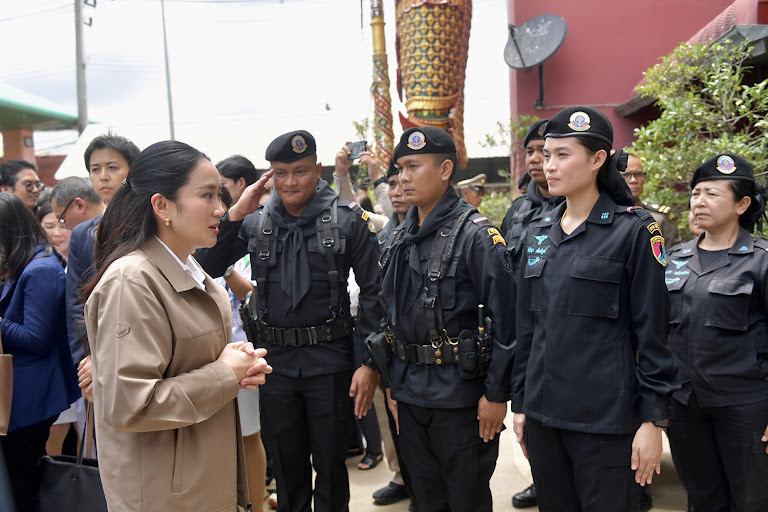Sa Kaeo Reopens Border, Balances Trade and Security Concerns
Limited border openings in Sa Kaeo aim to relieve local economic distress, linked to scam center concerns in Cambodia amid disputes.

The temporary relaxation of regulations at four checkpoints in Sa Kaeo province, Thailand, represents more than just a practical adjustment to border controls; it’s a glimpse into the intricate interplay between geopolitics, economics, and human lives. As reported by the Bangkok Post, the Burapha Task Force, under the First Army Region command, initiated this shift in response to growing complaints from local residents, farmers, and small-scale traders caught in the crossfire of a burgeoning dispute between Thailand and Cambodia. Prime Minister Paetongtarn Shinawatra’s visit to the Khlong Luek border checkpoint underscores the government’s awareness of the situation’s impact on local businesses and livelihoods.
But the story is deeper than just border closures and economic disruption. It’s about how nations navigate complex relations, balancing national security concerns with the immediate needs of their citizens. Shinawatra’s linking of the border restrictions to the proliferation of illegal scam centers in Cambodia adds another layer, suggesting a multifaceted strategy aimed at addressing not just trade issues but also transnational crime. However, Cambodian authorities have denied any involvement.
The easing of restrictions—allowing specific numbers of Thais and Cambodians to cross at designated times—reveals a deliberate attempt to mitigate the economic fallout while maintaining a degree of control. The army’s decision to allow Cambodians to purchase consumer goods on the Thai side points to an understanding of the economic interdependence that has developed along the border. The fact that daily two-way trade through five border checkpoints in Sa Kaeo, including the Thai-Cambodian Friendship Bridge, accounts for 330 million baht daily speaks to the magnitude of this interdependence.
This situation raises several crucial questions:
- What are the long-term implications of the dispute on regional trade and security? While these eased restrictions offer temporary relief, sustained tensions could disrupt established trade routes and create instability along the border.
- How effective will these targeted openings be in alleviating the economic hardship faced by local communities? The limited scope of the revised rules suggests that a more comprehensive approach may be needed to fully address the needs of affected residents and businesses.
- What is the potential for this conflict to escalate or de-escalate, and what role can diplomacy play in finding a sustainable resolution? Hun Sen’s presence in Oddar Meanchey province indicates a parallel engagement from the Cambodian side, raising questions about the dynamics of their internal decision-making and negotiation strategies.
The differences in access hours between the permanent checkpoints (Khlong Luek and Khao Din) and the temporary ones (Taphraya and Nong Preu) reveals the subtle calibration of control and risk assessment. The allowance of vehicles at the former but only bicycles at the latter further reflects this risk hierarchy.
This is, at its core, a story about the human cost of geopolitical tensions. The restrictions are not simply about closing borders; they’re about disrupting lives, impacting livelihoods, and potentially fueling resentment. The calculated response—partial openings, controlled access—reflects an attempt to balance the immediate needs of people and businesses with broader security considerations. Whether it is enough to alleviate the pressures on those who depend on cross-border trade is the pivotal question.
Ultimately, the situation in Sa Kaeo highlights the delicate balance that governments must strike when dealing with cross-border disputes. The easing of restrictions may be a necessary first step, but it also underscores the urgent need for a more sustainable and comprehensive solution that addresses the underlying causes of the conflict and protects the livelihoods of those caught in the middle.









